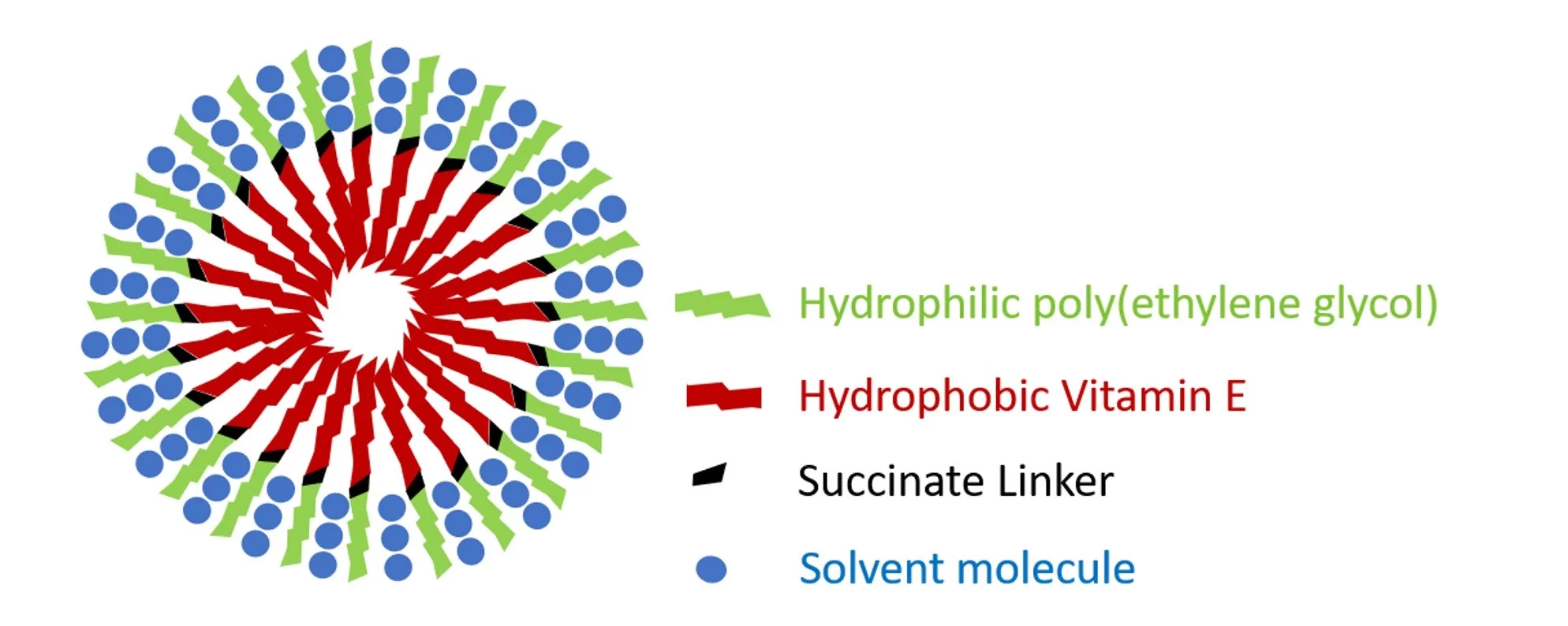A fruitful collaboration between our spin-off Excelsus Structural Solutions, Novartis Pharma Basel, the Institute of Crystallography of the CNR (Centro Nazionale Ricerche) in Bari, Italy and the University La Sapienza in Rome brought to the development of a simple theoretical model that describes the structure and functionality of a VitE-TPGS g delivery system (DDS) of micelles with dimensions in the nanoscale.
This can play an important role in the efficient distribution of a drug in the body and opens the gate to new opportunities for the pharmaceutical industry.
In its elegance and simplicity, assuming a hydrophobic inner core and an outer hydrated hydrophilic shell (see Figure), the model enhances the ability to extract size and shape information from biological Small-Angle X-Ray Scattering (bio-SAXS) experimental data, raising the usefulness of laboratory SAXS data recorded with a Pilatus solid state single photon counting detector to a level comparable to synchrotron-SAXS.
Why is size and shape characterization of DDSs so important? Because DDSs are nanoscale drug carriers capable of crossing the skin or the blood brain barrier and efficiently distribute in the body the active ingredient of a drug. Monitoring their size, shape and morphology plays a crucial role in absolving their duty in our body. An analytical tool that accurately characterizes their size and shape is therefore instrumental to screen and predict their functionality, especially since bio-SAXS can study samples in wet and conditioned environments. For example, as a function of pH values that simulate the drug delivery systems’ journey in the human body.
A sound article has been recently published on the Journal of Pharmaceutical Sciences:
https://authors.elsevier.com/a/1g5pI_WXzj-01

